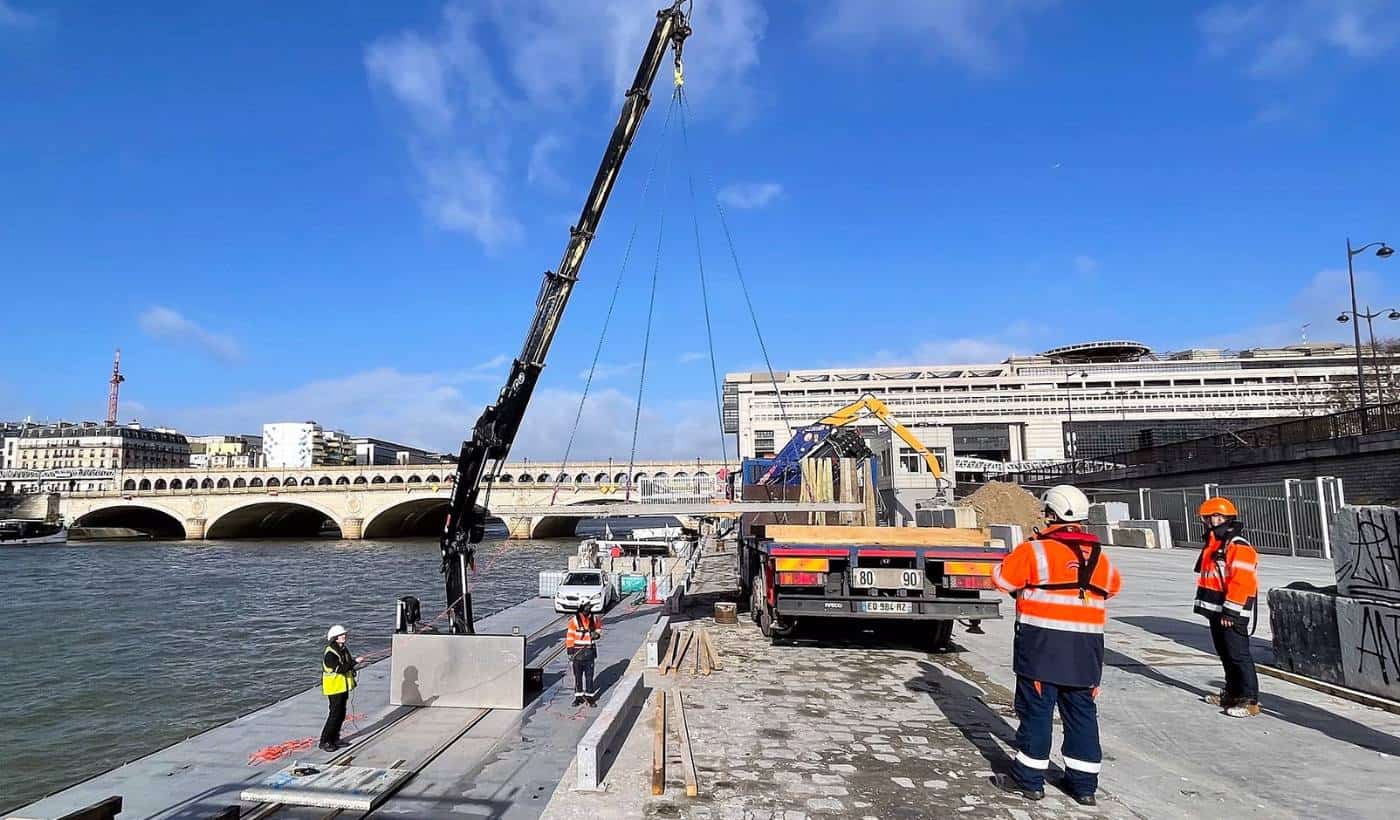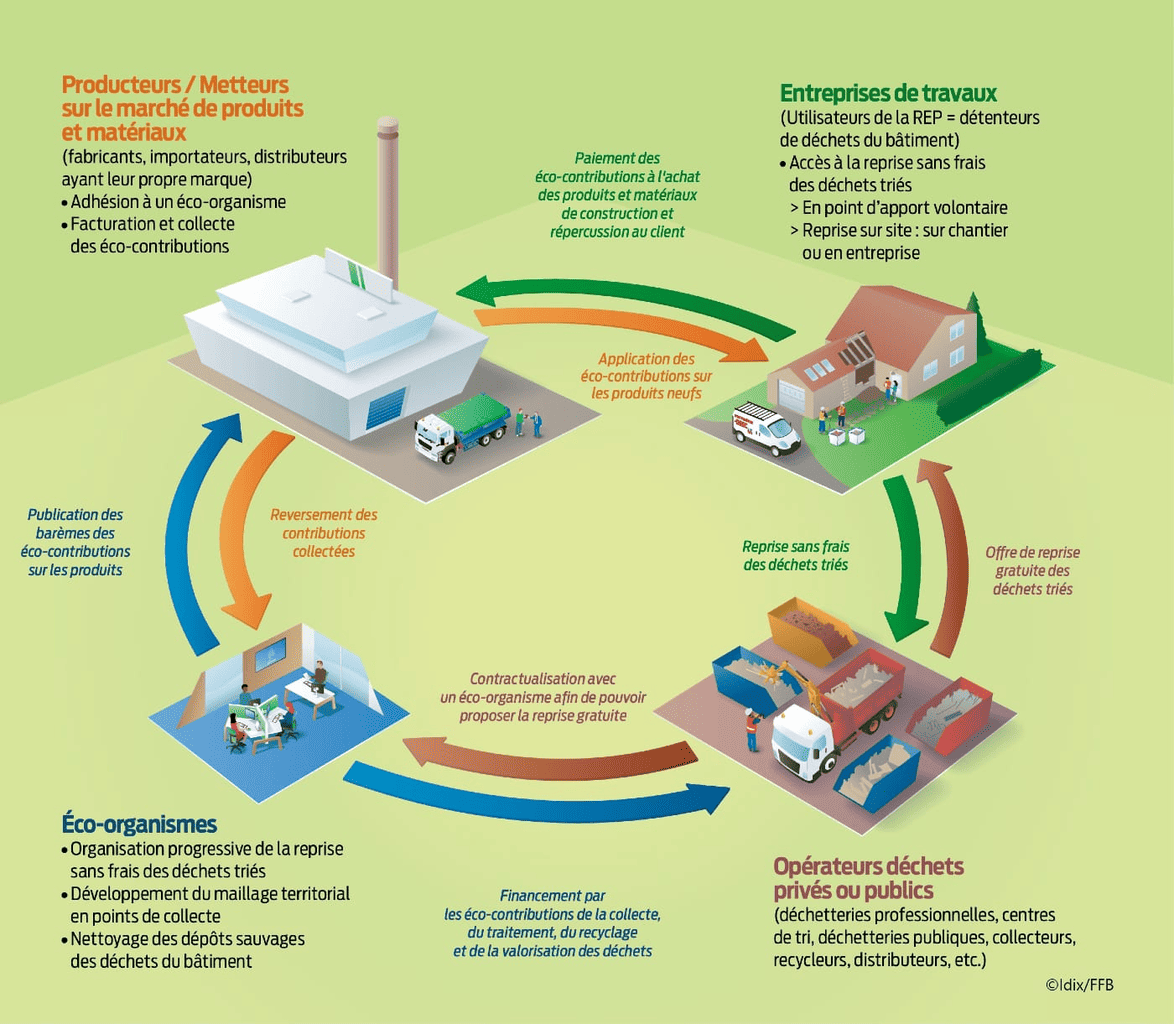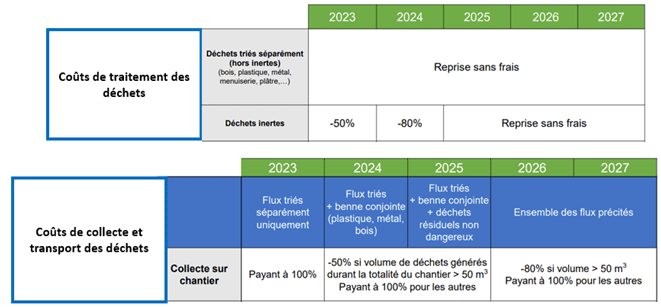
Everything you need to know about EPR in the construction
2 minutes of reading
in partnership with


The AGEC law of 10 February 2020 on the fight against waste and the circular economy provides for the introduction of an “Extended Producer Responsibility” (EPR) channel to ensure the management of waste arising from the use of construction products and materials. Demolition, renovation, rehabilitation and new construction are all covered by this EPR scheme.

How does EPR work in the building industry?
Based on the “polluter pays” principle, the EPR mechanism is as follows: Eco-contributions are applied to the prices of new construction products and materials. These eco-taxes are collected by those who place products on the market (suppliers, manufacturers, etc.) and then paid to approved eco-organisations responsible for organising the collection and recovery of waste.
In return, Bouygues Bâtiment benefits from a free waste collection service (provided that the waste is sorted) set up by the eco-organisations and financed by the eco-taxes.
These eco-taxes are collected by those who place products on the market (suppliers, manufacturers, etc.) and then paid to approved eco-organisations responsible for organising the collection and recovery of waste.
In return, Bouygues Bâtiment benefits from a free waste collection service (provided that the waste is sorted) set up by the eco-organisations and financed by the eco-taxes.
“The Bouygues Group is involved on both sides of the EPR system, as a user and a producer. Bouygues Bâtiment will have to pay eco-taxes which will be applied to new products purchased. But Bouygues Bâtiment is also a producer and a marketer, in particular through its imports of PMCB,” explains Léa Bracquemond, waste collection and treatment services buyer for Bouygues Bâtiment France.
What is the timetable for implementing EPR in the construction industry?
The EPR came into force on 1 May 2023, with a gradual increase in the cost of treatment and transport. The Bouygues Group will incur additional costs related to the payment of this eco-contribution when purchasing construction materials and products for our sites. However, the Group will be obliged to pay an eco-contribution from 1 May, while the recovery of treatment costs free of charge has been postponed to 1 September.
An EPR system to cover the entire life cycle of products
Here are the 4 main objectives of an EPR system:- eco-design of products
- waste prevention
- extending the useful life of products
- end-of-life management.
EPR eco-organisations
The EPR sector is organised by the eco-organisations, which are collective, not-for-profit entities financed by the collection and payment of eco-contributions by those who place PMCB on the market. These eco-organisations, of which there are four for the Building EPR, have been approved by the government and are managed by professionals in the sector. Ecominéro is approved for category 1 PMCB, Ecomaison and Valdelia are approved for category 2 waste, and Valobat for both categories.
“With these eco-organisations, we create a virtuous loop: users pay eco-contributions to producers or marketers. The latter pay them to the eco-organisations, which finance the collection, recycling and recovery of the waste from waste operators, who take care of these operations at the end of the chain,” explains Léa.
The three operating models proposed by the eco-organisations are financial and operational. The eco-organisation based on the financial model collects eco-contributions from producers and redistributes them to the local authorities or other operators responsible for collecting and sorting this waste, if these authorities or operators so request (subject to approval).
As part of the operational model, the eco-organisation collects eco-contributions from producers and uses these funds to contract with service providers to collect and treat the waste or to dispose of it using its own resources.
“The Bouygues Group has solid, structured processes for waste management, with well-defined specifications already in place and satisfactory tenders. So there’s no need to challenge that. This is why the Group is going to call on the Valobat eco-organisation as part of PMCB’s imports, an eco-organisation with a financial model.”
Impact of EPR and dissemination of information at Bouygues Construction
Bouygues Construction buys €850 million worth of PMCB every year. The eco-contribution rate in 2023 varies between 0.5% and 1%. The estimated financial burden of eco-taxes paid by the Group is therefore between €2.8 million and €5 million. For 2024 and 2025, the rate will be revised upwards to between 1.5% and 2%, representing a range of between €13 million and €17 million. The EPR system should lead to optimised waste management, with the emphasis on better recovery of materials through recycling or reuse. At the same time, this will help to prevent landfill sites from becoming saturated. “EPR will enable the development of different and new waste sorting, recovery and reuse channels, and will help to give waste a second life,” continues Léa. It’s a regulatory system that favours rehabilitation operations. This means fewer purchases of new products, but a significant volume of PMCB waste generated, which is then taken back free of charge. What’s more, the better the waste is sorted at source, the more efficient the recycling or recovery process will be. “At Bouygues Bâtiment France, waste collection and treatment costs €12 million a year. If we don’t improve source separation at constant tonnage, in 4 years our waste expenditure will double to €24 million a year compared with 2022. Sorting and collection at source will become a priority for our worksites, not least to keep costs under control,” concludes Léa. As well as aiming to optimise sorting, one of the objectives of EPR will be to improve collection at source by deploying a wider territorial network of waste collection and recovery points. The eco-organisations will be responsible for managing this intensification, and will work to identify voluntary collection points throughout the country. Internally at Bouygues Construction, a massive communication campaign has been launched and sent to all stakeholders. A memo from the Executive Committee containing all the information was then sent to the entire sector. It was explained and presented to all operational staff what waste was being taken back, the gradual ramp-up and the financial impact.Most read
More reading
Read also




What lies ahead? 7 megatrends and their influence on construction, real estate and urban development
Article
20 minutes of reading

